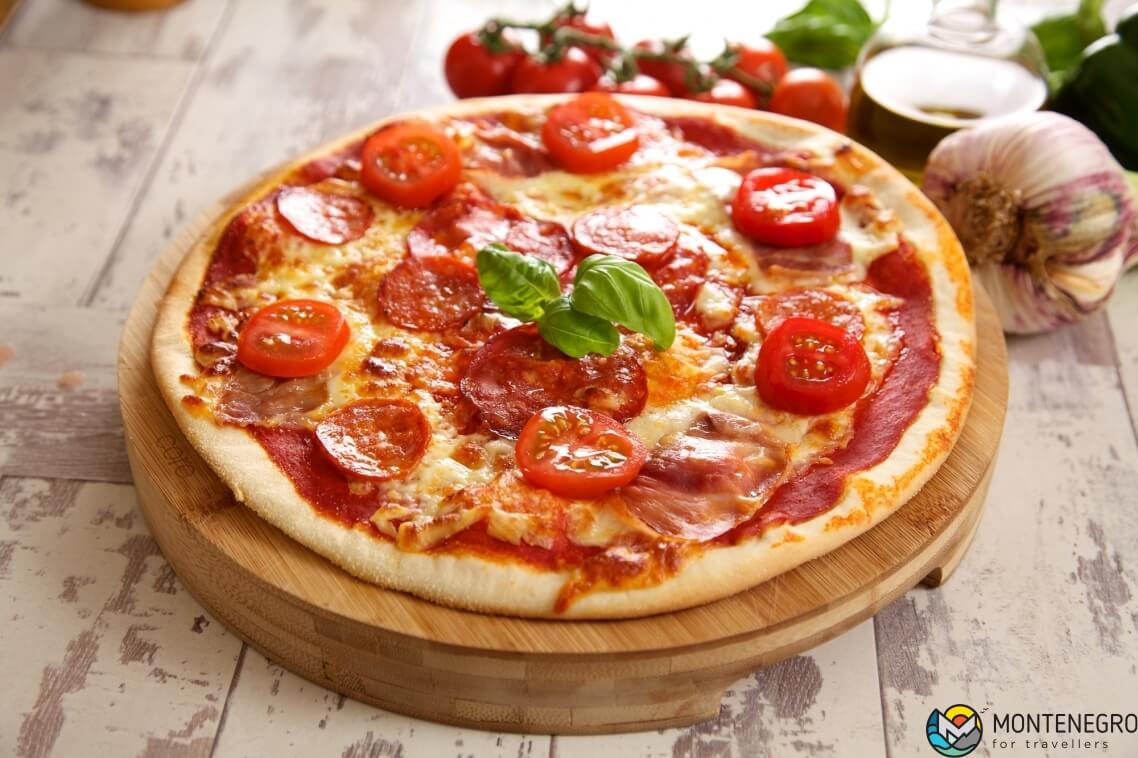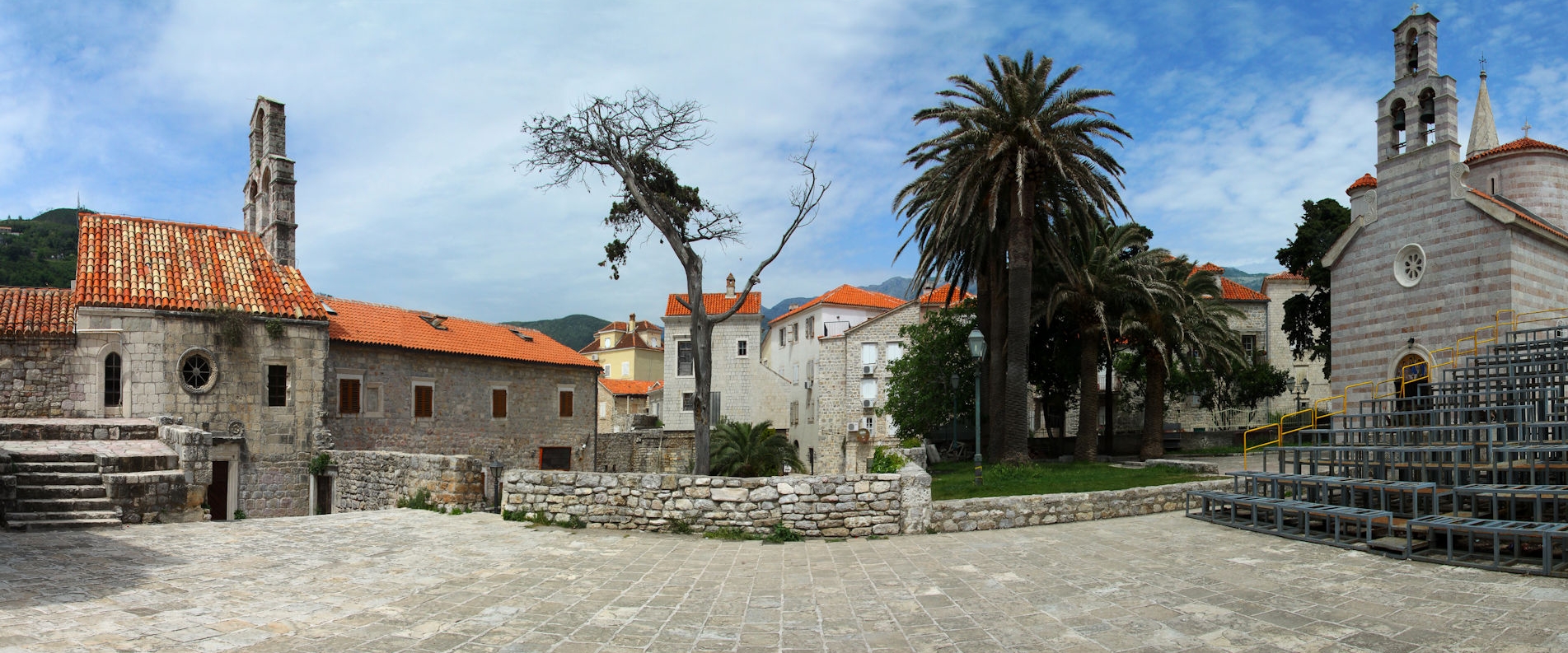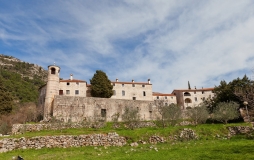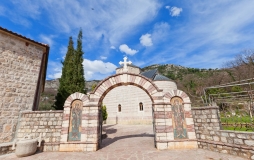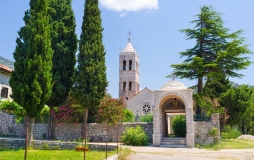Budva is one of the most popular tourist destinations in Montenegro. The town and its surrounding area are known as the Budva Riviera and it’s famous for its sandy beaches, temperate climate, well-developed infrastructure, and fun for all ages.
Read our guide to find out which museums to visit to learn more about the town’s history, where to try the best Montenegrin dishes, where to get an adrenaline kick, or just have a fun day out with the family.
Cultural pursuits in Budva: churches, museums, festivals, and monasteries
Most tourists visiting Budva for the first time start off in the Old Town (Stari Grad), which is a superb example of Mediterranean architecture. The town as it stands now was built during the reign of the Republic of Venice. However, there is a more ancient history to discover within its walls, which contributed to Budva’s look and feel for two and a half millennia. Nowadays, this is where you’ll find practically all the museums and churches. Plus, it’s the place to be if you want to catch one of their regular festivals, art exhibitions and concerts.
Perhaps the most impressive structure in the Old City is the Citadel, or the Fortress of St. Mary (which has an entrance fee). It is an immense fortress, once one of the most impenetrable on the Adriatic coast. Its first incarnation was designed to protect the town against attack from the sea and was building started on it back in the 9th century. Later, in the 15th century, the fortress was rebuilt and fortified under the Republic of Venice. It now houses a small maritime museum, a library, a viewing platform that overlooks the Island of St. Nicholas (Sveti Nikola), as well as a restaurant. The museum exhibits include models of ships, rare hand-drawn maps, and valuable editions of books on Balkan history.
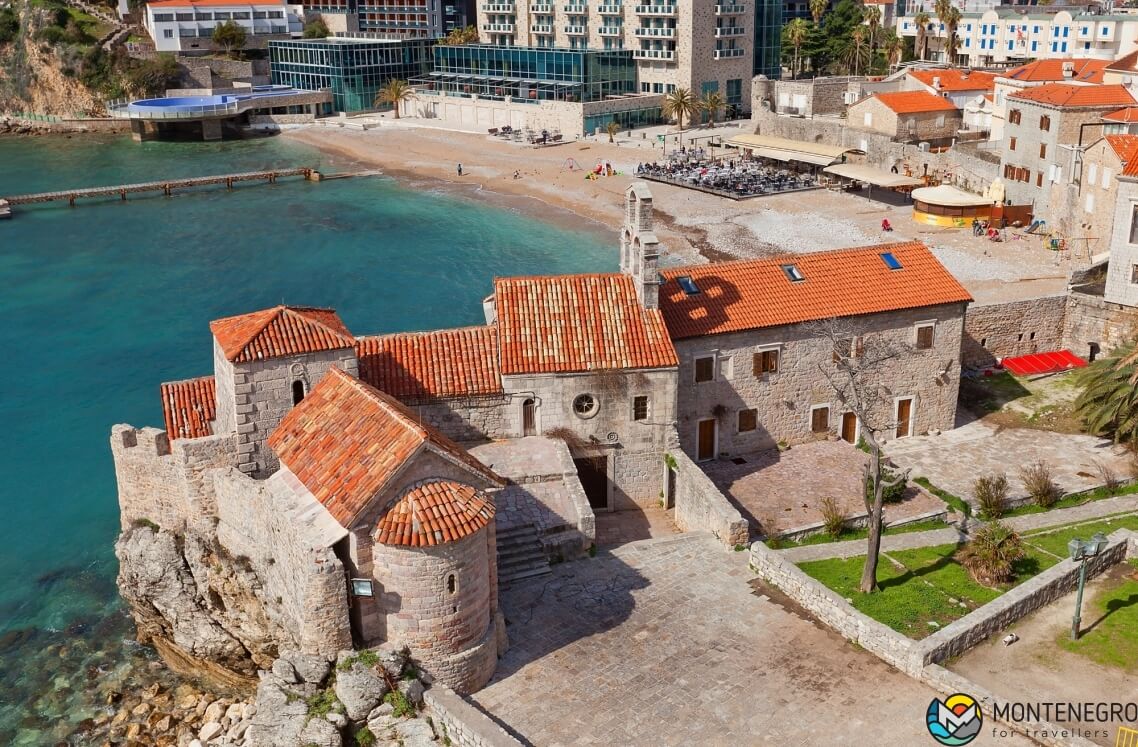
The Archaeological Museum at Petra I Petrovića 11, Stari grad, has about 3000 exhibits dating from the 5th century BC found during excavations in the Old Town and surroundings — in the Greek and Roman necropolises. Budva is one of the oldest settlements on the Adriatic, and has lasting traces of the Illyrian, Greek, Roman and Slavic civilizations. This becomes clear while perusing the museum’s displays of household items and tools, jewellery and clothing, vases and figurines.
Every year, the Old Town’s medieval streets and squares become the stage for summer festivals. The Grad Theatre City Budva is held from July to August and you can see open-air theatre shows, poetry readings, musical performances, art exhibitions and performances. The festival attracts artists to Budva from all over Europe. The summer months is also an ideal time to experience traditional Balkan and Mediterranean music at the famous festival, The Song of the Mediterranean. If you’re interested in folk music, dance and choirs then the international festival Budva Fest is for you. It aims to encourage cultural exchange between different countries.
The Modern Gallery of Budva is in old Budva, at Cara Dušana 19. It’s a small gallery that fits into one room but it is an interesting place to visit for everyone, not just art lovers. It has been exhibiting the best contemporary artists from Montenegro and the former Yugoslavia since 1972. It is also home to a unique collection of works by contemporary Balkan expressionists.
All the churches in the Old Town are in its south-western part on Starogradskaya Square. The Catholic St. John the Baptist Church is the most recognisable of the group with its high bell tower. It was built on the foundations of a former 7th century church, whose only surviving element is the floor mosaic with an image of John the Baptist. The most important of the church’s relics are the fragment of a Holy Cross, as well as a 13th century icon of the Virgin with the infant Jesus, considered a “protector of the town”.
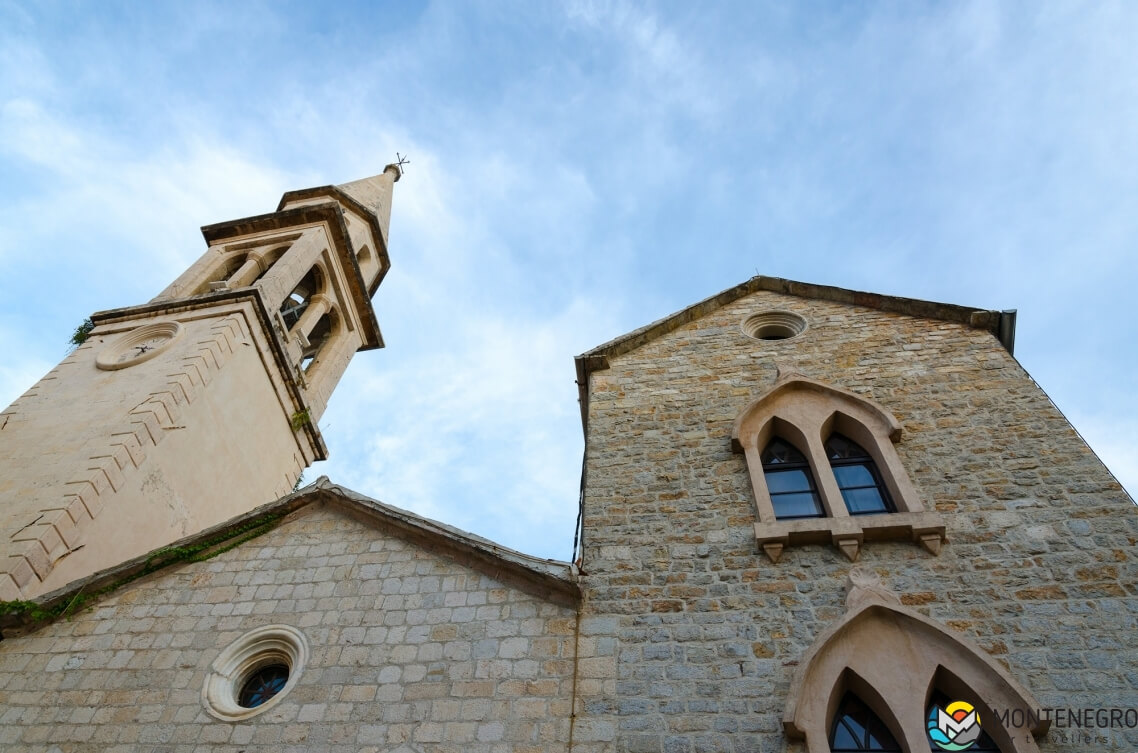
Next to the Catholic Church there is the Orthodox Holy Trinity Church built in 1804 in typical Byzantine style. The interior’s centrepiece is a baroque iconostasis painted by the Greek icon painter Naoum Zetiri. Each of the church entrances is decorated with gilded mosaic. Above the main entrance there is a mosaic with a copy of the painting "Trinity" by Andrei Rublev.
The most ancient church in Budva is the Santa Maria in Punta (Virgin Mary), built in 840. It is opposite the Orthodox church and is built into the fortress wall. It used to house the icon of the Budva Virgin, which was moved to the John the Baptist Church in the early 19th century. These days, Santa Maria in Punta is not open for church services but exhibitions and music concerts are regularly held here. Its arched architecture has excellent acoustics.
Montenegro’s monasteries have a special place in the history and culture of the country, and are a pilgrimage destination for large numbers of Orthodox believers. There are 8 monasteries dating back to different eras in and around Budva.
The Podmaine (or Podstrog) Monastery is on the outskirts of Budva on a hill with a beautiful view over the city. It is easily accessible on foot by following the main road. The exact dates are unknown but historians suggest the monastery was built in the 15th century during the reign of Ivan Crnojević. It was the residence of Montenegrin metropolitans for a long time, but in the 1830s the monastery was bought by the Austrian empire and turned into a military fortress. After the fire of 1864, the fighting during the Krivošije Uprising of 1869 and the catastrophic earthquake of 1979, the monastery was completely destroyed. Podmaine has been repaired and restored and its grounds now house areas of flowering gardens and two Orthodox churches: the Church of the Assumption of the Virgin and the smaller Church of the Assumption.
8km from Budva, near the Sveti Stefan resort, is the Praskvica Monastery, founded in 1050. Legend has it that it was named after a spring on its grounds with water that smells like peaches (from the local word "praskva" meaning peach). The monastery can be reached by the Mediteran Express bus line that runs along the coast. You’ll see the sign and the monastery gates before you actually reach Sveti Stefan. While walking around the monastery, you have the chance to visit one of the most beautiful viewing platforms in Montenegro. We highly recommend climbing up the hill to the village of Čelobrdo. There’s an old stone path leading up to the village as well as the regular road. Another local legend has it that a Russian monk and hermit named Yegor Stroganov built the path. He had taken a vow of silence and worked for 10 years to build the road that connects the the sea and the mountain. The grateful local residents put up a commemorative plaque in his honour.
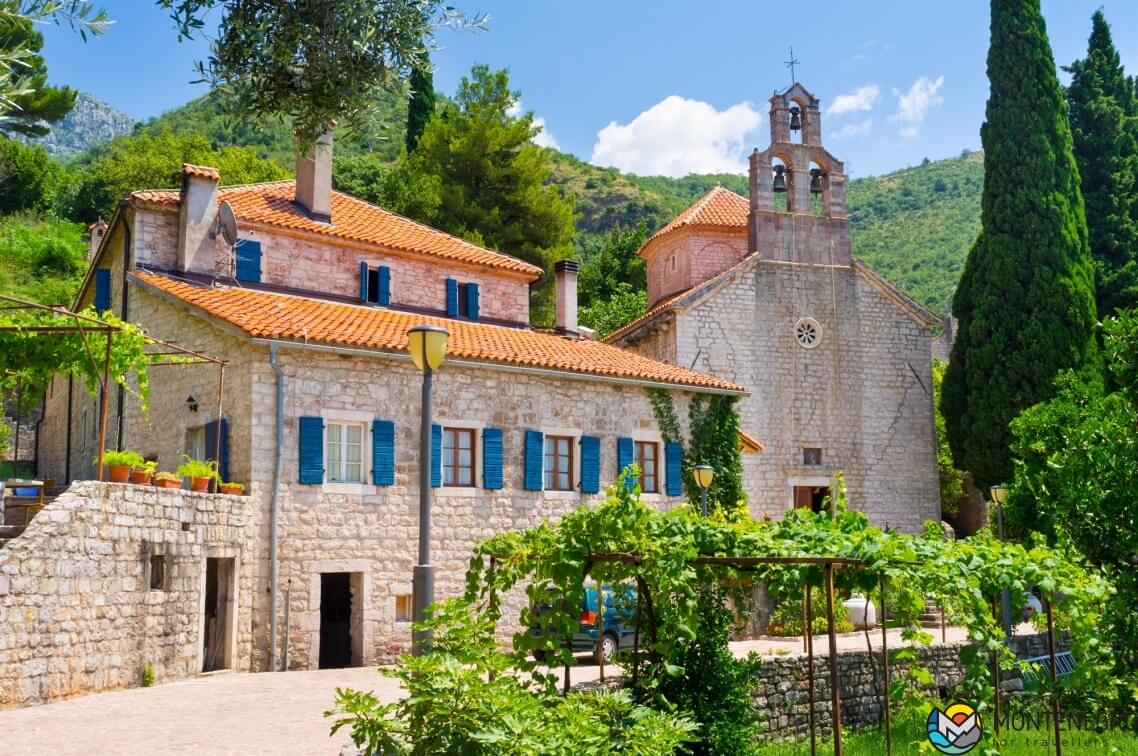
The Reževići Monastery is in the Budva municipality, near the town of Petrovac. There is a public bus that follows the Budva-Petrovac route that’ll take you there. It is thought that the monastery was founded in the 13th century but it first appears in written records in the 15th century. According to a legend, King Stefan the First-Crowned was travelling in the area with his retinue and stopped to rest by a pillar where the locals had left a pitcher of wine for travellers. After drinking the wine, the king ordered that a church be built on that very spot. The monastery complex now comprises 2 churches: the Assumption of the Blessed Virgin and the Holy Trinity. Reževići Monastery is under the protection of UNESCO. Its vault houses unique 17th century frescoes, the icon of the Blessed Virgin Mary from 1693, the Four Gospels from 1835, the Tabernacle from the mid 19th century, and a unique ritual cross from 1850.
Where to Have Fun in Budva: beaches, a water park, extreme sports, and water sports
Budva’s beaches draw tourists in with their diversity, well-developed infrastructure and cleanliness: 13 of them have earned the Blue Flag award, an internationally recognised symbol of quality. Every beach has changing rooms, fresh water showers, toilets, life guard towers, and sun loungers and parasols for hire.
Budva’s main urban beach the the Slovenska Plaža beach. Its sandy pebbly coast is home to most of the tourist attractions in the area: restaurants, playgrounds, an amusement park, go-karting, a bungee jumping tower, and water sport equipment rental are all here. It is very crowded in the peak season so Slovenska Plaža is only for those who like a bit of hubbub and being around families with children. Boats to Hawaii beach on St. Nicholas island depart regularly from the main pier.
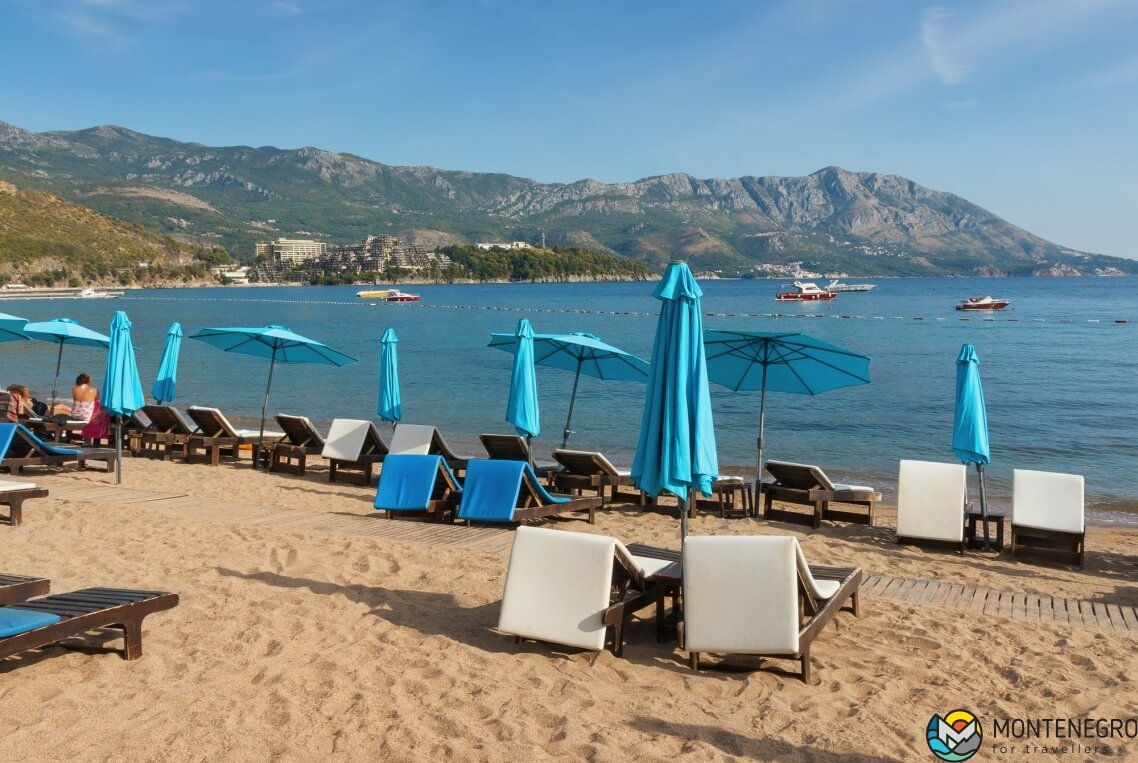
Mogren beach and the clifftop path leading to it is considered the most picturesque coastal area in town. As you walk along it beautiful views of Old Budva stretch out before you and you’ll catch a glimpse of one of the symbols of the town — the Dancer from Budva statue. The beach is divided in two by a rockface that sticks out into the sea that has a passage through it. Extreme sports fans can rent water sports gear right there on the beach.
Ploče beach, 10 km from Budva, is one of the town’s most unique beaches. It is a series of stone terraces with sun loungers and parasols, bars and a restaurant. The beach holds foam parties making it a perfect hotspot for young people. There is a staircase from the pier into the sea, which is deep upon entry. For children, there are shallow sea water pools. You can get to Ploče on the Mediteran Express bus, or by boat, which departs from the main pier on the Slovenska Plaža beach every hour.
Kamenovo beach can be reached by public bus or you can walk along the coast via Becici beach, Rafailovici village and a walkway cut through the rockface. This beach renowned for its privacy: there are no hotels, villas or apartments on the beachfront so it isn’t as crowded as Budva’s urban beaches even in peak season. It also has incredibly clean water and has earned a Blue Flag.

Aquapark Budva is a world of wild water fun for the whole family. You can easily spend the whole day there. It is up on Top hill and is the largest water park on the coast of Montenegro. It boasts 7 extreme slides with a total length of 600 meters, 53 children's rides and attractions, a restaurant and bars.
There’s also the chance to take to the skies and look down on the entire Budva Riviera: paragliding is an unforgettable experience and will leave you with breath-taking memories of your holiday in Montenegro. You can book a flight in the Budva Paragliding Montenegro office, which is in the Hotel Tre Canne at Mediteranska bb. You go paragliding in tandem with an experienced instructor so it is safe for children too.
We recommend that water sports fans rent kayaks and SUP boards at AquaSport, on Slovenska Plaža beach. While enjoying a bit of light exercise and a pleasant paddle in the water, you can admire Old Budva from the sea, float into the Pecina za golubove cave and visit the unmanned beaches on Sveti Nikola Island. The Water Sport Center (rental locations are on Slovenska Plaža beach and Bečići beach), also rent out jet skis, snorkelling gear and offer you the chance to try parasailing.
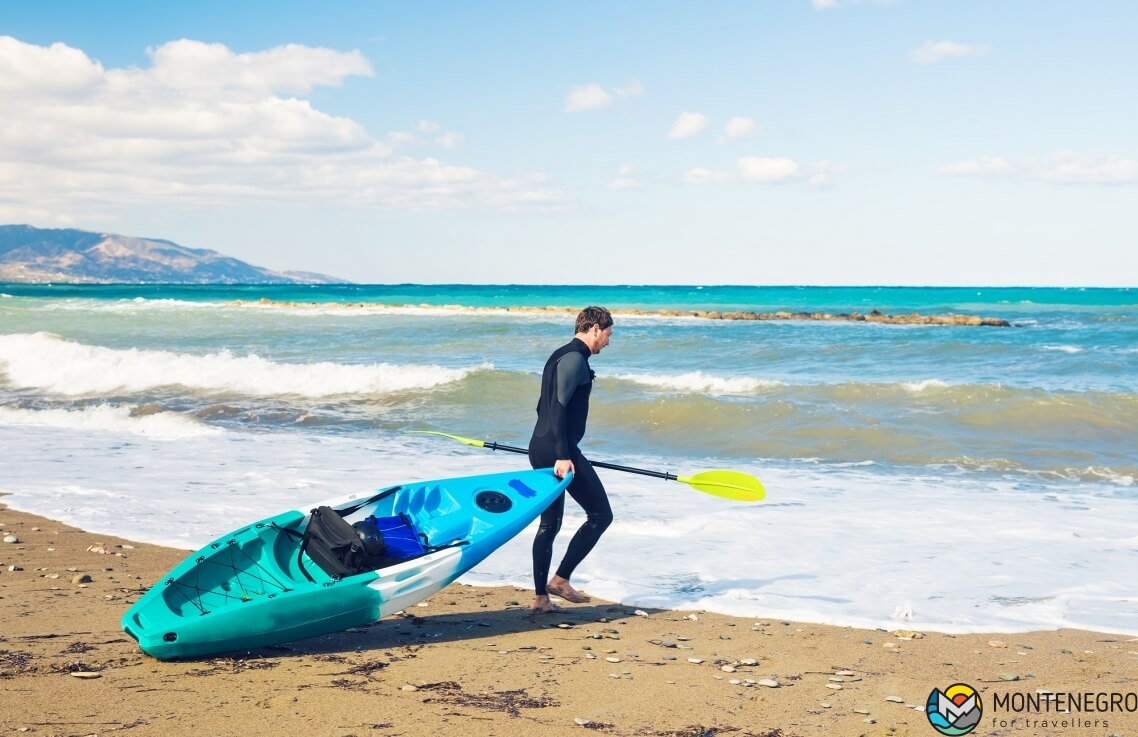
Diving in Montenegro is growing in popularity every year. The depths of the Adriatic are the place to be for fascinating dives. Pro Diving Montenegro does everything to make your experience the best it can be. It offers different programs for both experienced and beginner divers. There are several shipwrecks in the shallow depths off the coast of Montenegro as well as underwater caves, tunnels and reefs.
Horse Center Budva Montenegro offers tourists a wide range of horseriding experiences. You can ride through a tangerine grove, on picturesque mountain roads, or along the coast on Yaz beach. The center also has a riding school where everyone is taught how to communicate with their horse and sit in the saddle properly. The center is in Lastva Grbaljska, between Budva and Tivat.
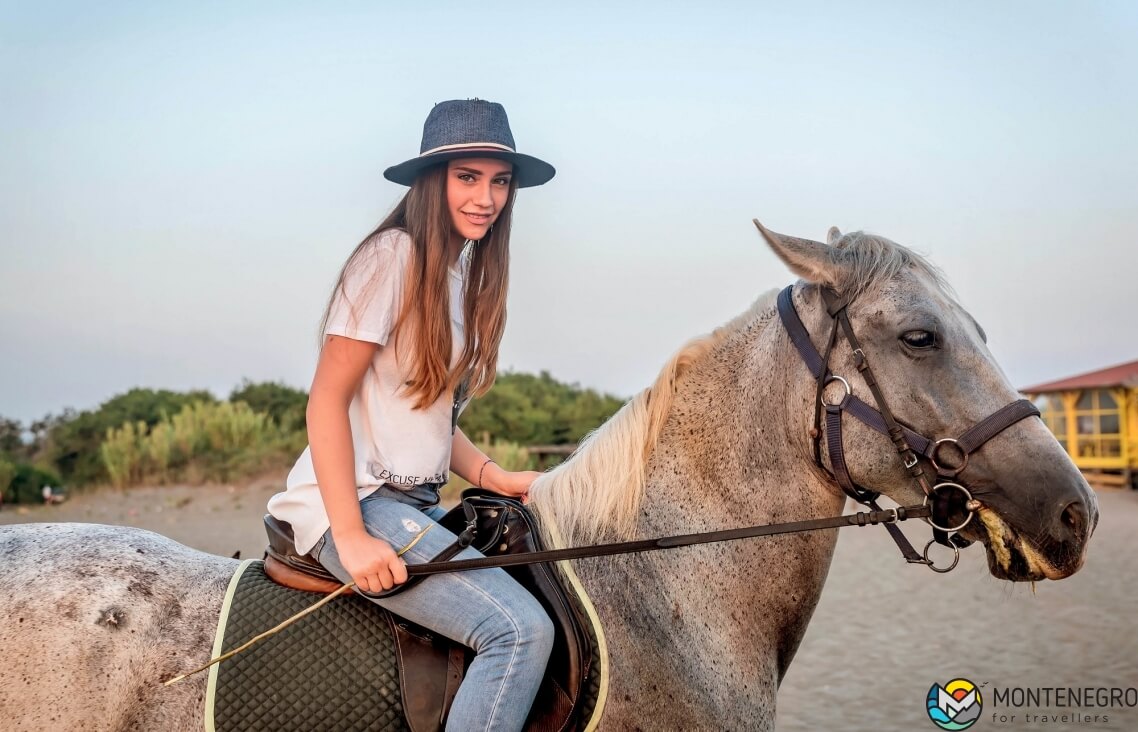
There is an amusement park on Budva's seafront with rides for both adults and children. It has arcade machines, a trampoline, a swimming pool with bumper boats, the Kamikaze ride, a little train for kids, a rope park, and cable cars.
The cuisine: Montenegro’s national dishes, restaurants and cafes in Budva.
Montenegro’s cuisine combines traditional recipes with culinary influences from its neighbouring countries. Traditionally, Montenegro favours meat dishes: lamb under sač (roasted in a pot with a lid buried in hot coals), Ćevapi sausages made from minced meat, Pljeskavica — grilled minced meat, or the famous "mesano meso" (a large assorted meat platter). However, in the coastal areas, fish and seafood dishes, and Mediterranean and Italian cuisine are equally popular. Read on to find out our top tips for where to eat in Budva.
The restaurant Jadran kod Krsta is on the main coastal promenade. It is famous for being a mainstay in the area for over 40 years and its warm, homely atmosphere. The menu offers a range of seafood treats: grilled squid and octopus, clams, lobster, mussel in bouzar sauce, shrimp, and freshly caught fish. You can try traditional Montenegrin appetisers: Negush prsut (thin slices of dried, smoked meat), local homemade cheese, and olives.
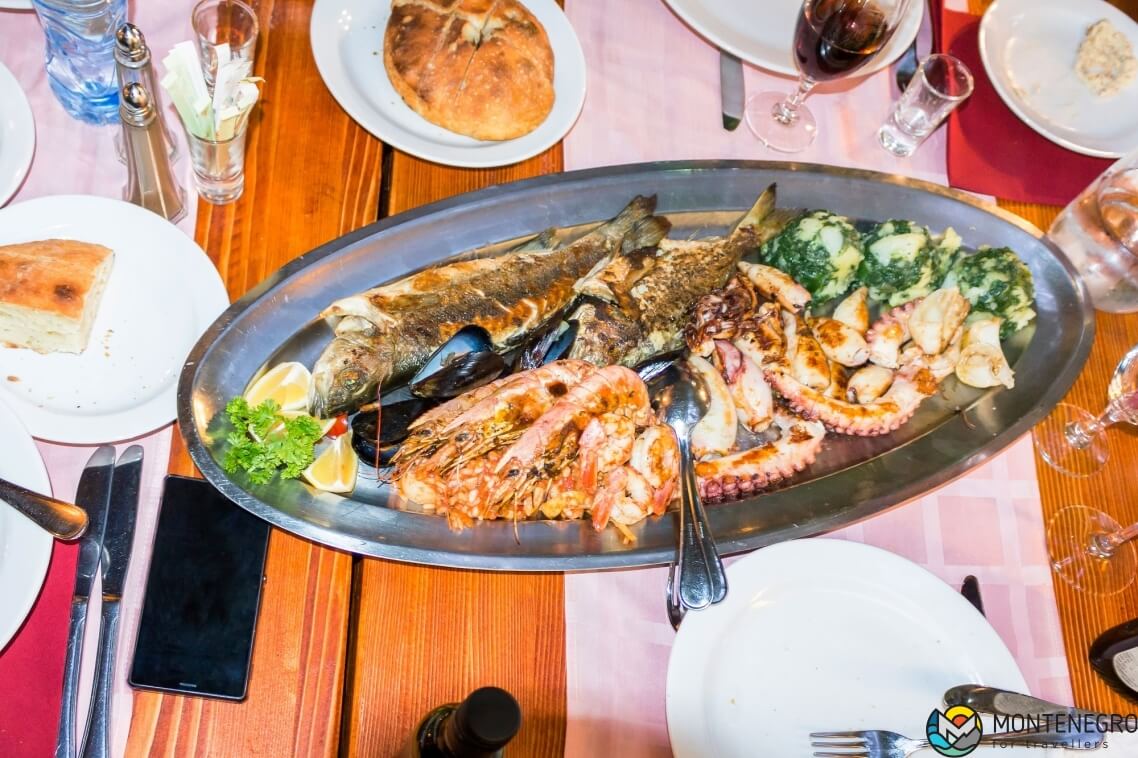
Cafe Kužina serves up affordable and tasty dinners. It is a little tucked away out of the noisy tourist area but is still in walking distance from the main attractions. Its impressive portions and homemade cooked food bring in both the locals and tourists alike. The bulk of the menu is made up of national food: meat and fish dishes, veal čorby (rich, thick soups), shopska salad, roasted peppers, Njeguški cheese and kajmak (kind of like cream cheese or thick cream). Montenegrin menus often also offer something called “ready food” (gotova jela), a selection of “dishes of the day” at affordable prices.
The restaurant Mercur is near the bus station. Its interior will appeal to both adults and children. There is a terrace out front with greenery and a small “zoo” where peacocks, ducks, rabbits, swans and turtles walk freely about the lawn. It's a pleasant place to take refuge from the summer heat and it’s fun for children too: they can look at the animals or play in the large playground. The menu offers traditional Montenegrin dishes, including lamb under sač.
If you want to dine in an atmospheric Old Town restaurant, we recommend going to Konoba Portun, a restaurant serving Mediterranean and Montenegrin cuisine. It has a marine-style interior and several tables on a terrace. Try the fish assortment, octopus under sač, stuffed squid, traditional appetisers and salads.
Check out the jazz club and bar, Casper, opposite the Archaeological Museum in the Old Town. In the afternoon, people come here to drink delicious coffee on the terrace in the shade under trees and in the evening they come in small groups for a bottle of craft beer accompanied by great music. The menu offers appetisers, a large selection of cocktails, beers, wines, the traditional local spirit — rakija, coffee, fresh juices and smoothies. Summer evenings see European DJs come to perform sets and soul and jazz bands perform concerts here.
Shanghai, a Chinese restaurant, is in the villa, "Balkan". Here you can dine on classic Chinese dishes such as crispy pork in sweet and sour sauce, duck in hot sauce with sesame, chicken in oyster sauce, fried Chinese dumplings, and spring rolls. It has a classic Asian-style interior and a summer terrace, which adjoins the walls of the Old Town.
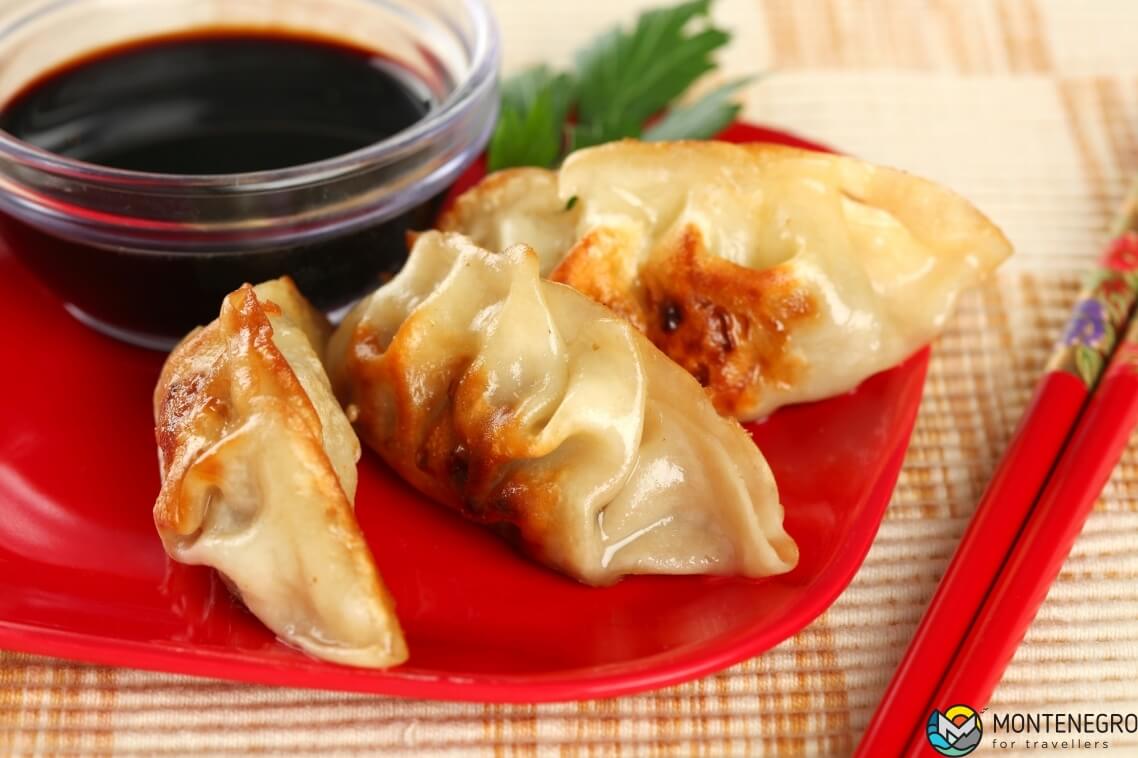
If you travel 6km out of Budva to a small village called Krapina, there is an eco-restaurant and fish farm called Ribnjak. It’s accessible by foot or taxi. You need to go towards Podmaine monastery and then follow the signs to Ribnjak. The farm rears trout and carp, which you can order and eat. The restaurant grounds have a small waterfall, where you can swim in the hot summer months. You can also relax in a deckchair and wait while freshly caught fish is prepared for you. Children love the farm’s mini zoo.
Forsage Gastro Lounge at 29 Novembra, 24 is set back from the sea and away from the bustling tourist streets. It therefore has a much more relaxing atmosphere and its prices are much more in line with Budva’s affordable level. The restaurant specialises in exquisitely prepared European dishes: the chef’s steak, cream of mushroom soup, salmon, shrimps and vegetables with a creamy sauce, and the chef’s special pancakes with raspberries and cream and many more.
The pizzeria Sambra in the Old Town is popular with its patrons for its cosy interior and wide selection of Italian dishes. They serve over 15 kinds of pizza including their signature pizza called the "Montenegro". They also cook Italian and local starters and appetisers, pasta, meat dishes, and desserts. It is open all year round.
